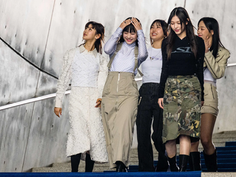Beauty of Newari Culture, Nepal: Lifestyle Heritage
- Dia Upreti
- Oct 25, 2024
- 3 min read
Diya Upreti, Jadetimes Staff
Diya Upreti is a Jadetimes news reporter covering Fashion News

Newars are in the Kathmandu Valley and represent Nepal's most vibrant communities with very rich culture. Newari heritage, architecture, festivals, and traditions create a rich area of Nepalese identity through their ancient history mixed with spiritual practices that may still be observed today in modern times. Newars are the native people of this valley and, surprisingly, have a culture that puts together Hinduism and Buddhism so lovingly in all its works-from very elaborate festivals to such out-of-the-ordinary art forms.
Heritage of Rich Architecture and Craftsmanship
The Newar civilization is mainly renowned for fabulous architectural genius in the Kathmandu Valley. Some of the best Newari handicraft can be seen in the elaborate temples, palaces, and courtyards adorning cities like Kathmandu, Bhaktapur, and Patan. Wood carvings, stone sculptures, metalwork, among other things, as seen in such ancient temples as the Nyatapola Temple in Bhaktapur or the Patan Durbar Square, are a few examples of this legacy. Such buildings, many of which date back by centuries, are living symbols of the indominatability of Newari culture.
Festivals in the Community
Among the vibrant expressions of Newari culture are the numerous festivals that are full of joyous activities undertaken throughout the year. These include huge festivals such as Indra Jatra, an annual celebration in Kathmandu to celebrate the honor of Indra, the king of the gods. The festival features chariot processions, masked dances, and street performances that turn the city into a living theater. Perhaps most famous of all is ** Bisket Jatra in Bhaktapur, with huge wooden chariots, pulled through the streets to initiate the Nepali New Year.
Another indigenous festival is **Yomari Punhi,**, which falls during winters. During this festival, the Newar community makes and enjoys an odd food item called "yomari," which is prepared by putting rice flour and pouring upon it sweet stuff like sesame and molasses. This festival is in relation to the termination of the harvesting season of rice and marks a festival that must be enjoyed in prosperity and abundance.
Kumari: The Living Goddess
What is unique to Newari culture is the tradition called the Kumari, or the living goddess. A prepubescent girl is chosen from a Newar family; it is said that she is the human form of the Hindu goddess Taleju. The Kumari is selected through an ancient process that applies astrology, perfection of body, and signs of divinity. She resides in a sort of palatial house in the Kathmandu known as Kumari Ghar where her presence is supposed to bring blessings and protection.
While the Kumari is worshipped on many festivals, she assumes a unique importance in **Indra Jatra**, wherein, in an immaculate chariot procession, the goddess moves about in the streets of Kathmandu, offering her blessings to the people. The custom of Kumari has been one fascinating constituent of Newari culture, which integrates religion, mysticism, and social adoration into one.
Food Culture and Rituals
Another important component of their cultural identity is Newari cuisine. Newars claim to have an extremely luscious culinary culture, with specialties like **choila** (spiced grilled meat), **bara** (lentil patties), and sapu mhicha (buffalo leaf tripe stuffed with bone marrow) among the list of delicacies. Newari food is prepared on specific occasions and ritual purposes; each dish represents their connection to earth, their forefathers, and their gods.
The Newari culture today stands as a kaleidoscope of tradition, spirituality, and artistry. Festivals, rituals, and heritage are perfectly secular and living parts of Nepal's history. It sets forth an age where all these traditions saw the light of day and are still well and alive, be it through their stupendous architecture or festivals like Indra Jatra and Yomari Punhi or the spiritual reverence of the Kumari.


























Comments